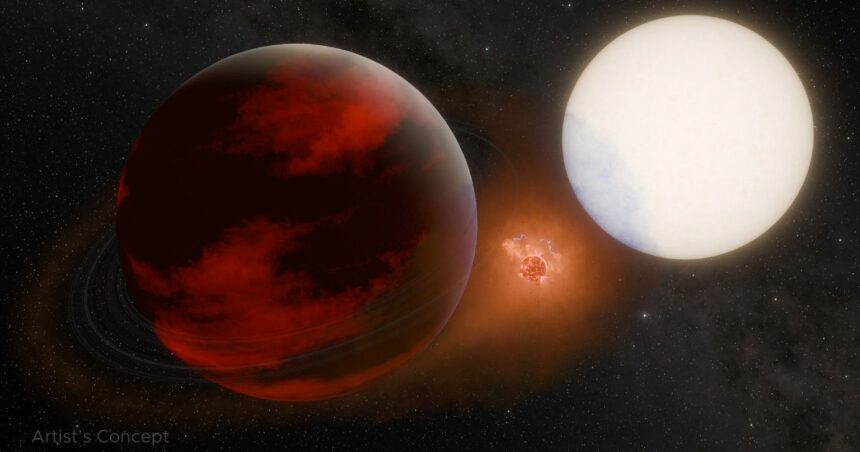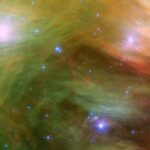An astonishing discovery, hints of a volcanic moon orbiting an alien planet. This finding, potentially the first of its kind, could significantly expand our understanding of moons and planets beyond our solar system.
The discovery was made using data from the James Webb Space Telescope (JWST) and the Very Large Telescope (VLT) in Chile. Scientists detected unusual emissions from a gas giant exoplanet located about 200 light-years away from Earth. These emissions suggest the presence of a moon with active volcanic activity, spewing gases into space.
The volcanic moon, tentatively named Vulcan, is estimated to be about the size of our moon but with a much more turbulent environment. The data indicate that Vulcan’s surface is dotted with numerous volcanoes, regularly erupting and releasing plumes of gas and ash. This activity is similar to what we see on Jupiter’s moon Io, the most volcanically active body in our solar system.
The potential discovery of a volcanic moon around an alien planet is groundbreaking. It raises questions about the formation and evolution of moons and their interactions with their host planets. Volcanic activity on such moons could have significant implications for their atmospheres and potential habitability.
The team of astronomers, led by Dr. Elena Rodriguez, has been analyzing the data for months. They noticed peculiar signatures in the spectral lines of the exoplanet, which they could not attribute to the planet itself. Further analysis suggested that these signatures were consistent with volcanic gases, such as sulfur dioxide, which are typically associated with volcanic activity.
If confirmed, Vulcan would be the first known volcanic moon outside our solar system. This discovery could open up new avenues of research into the geologic and atmospheric processes of exoplanets and their moons. The presence of volcanic activity could also affect the magnetic environment of the exoplanet, potentially influencing its habitability.





